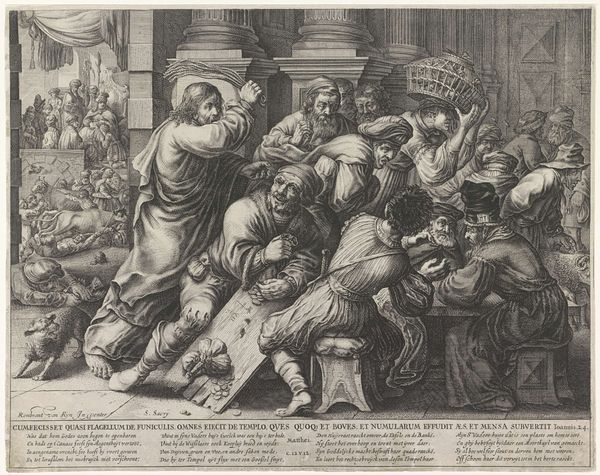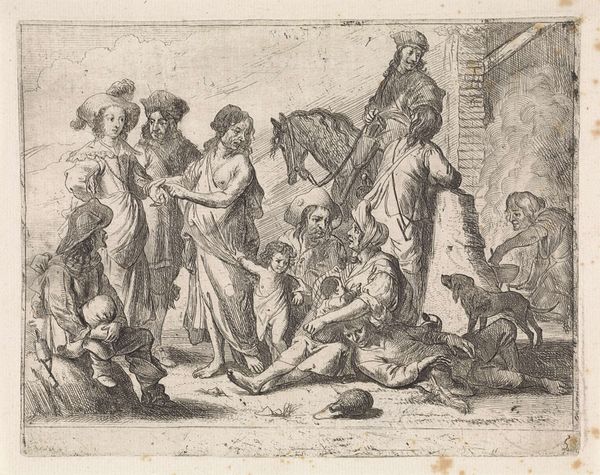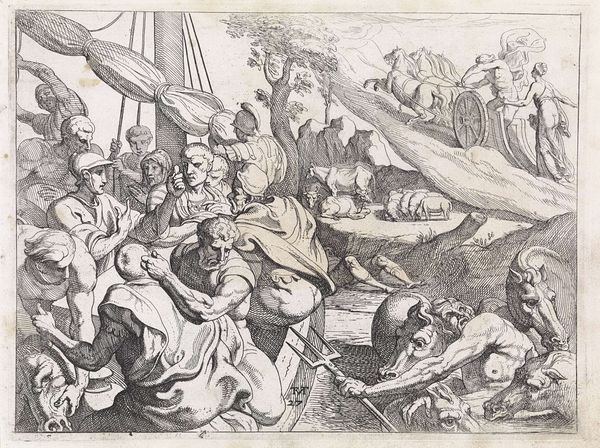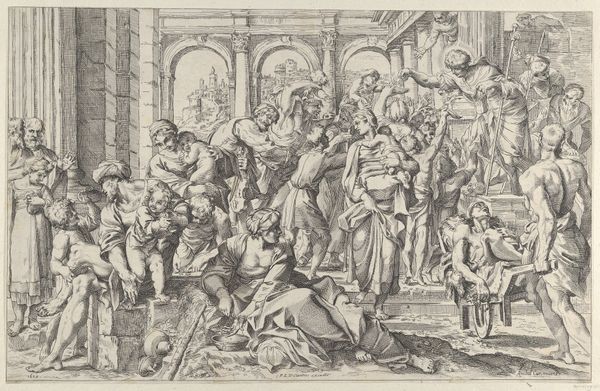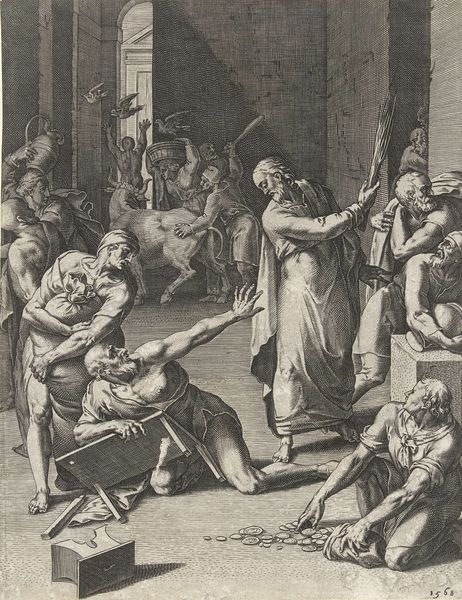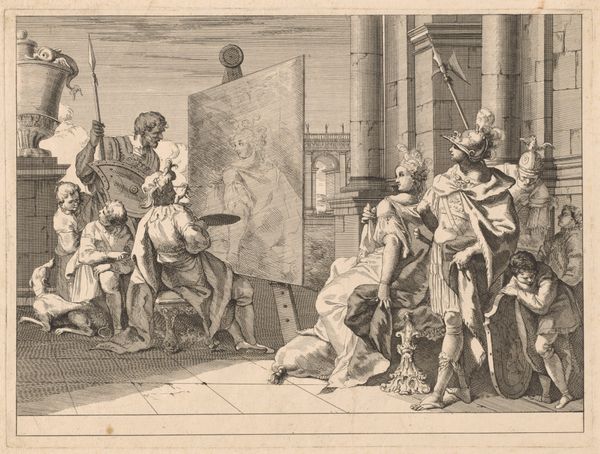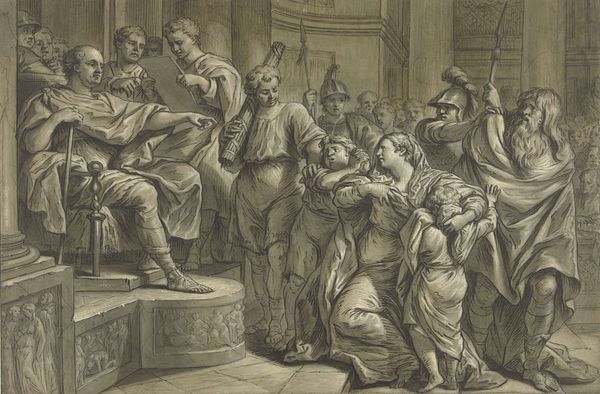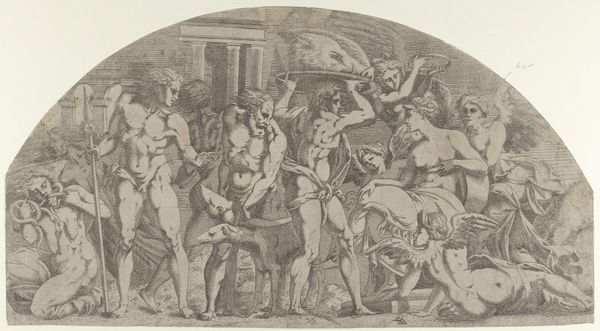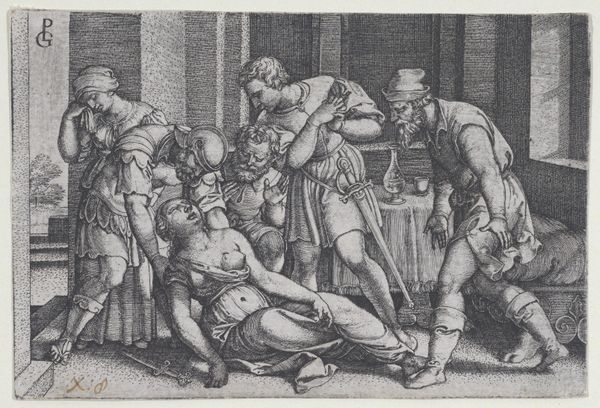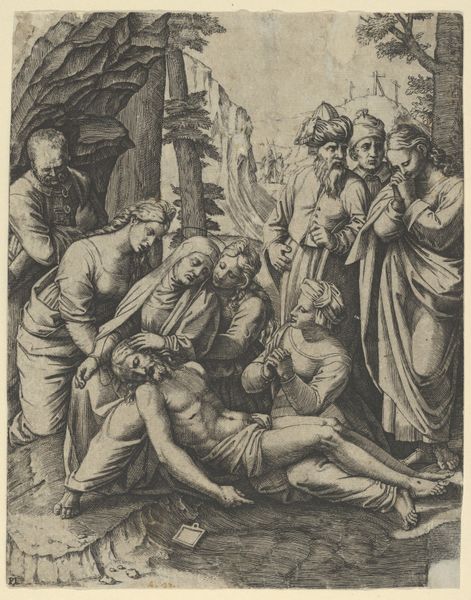
The Beheading of Claudius Paulus and the Capture of Julius Civilis 1600 - 1613
0:00
0:00
ottovanveen
Rijksmuseum
oil-paint
#
narrative-art
#
baroque
#
oil-paint
#
figuration
#
oil painting
#
flemish
#
genre-painting
#
history-painting
Dimensions: height 38 cm, width 52 cm
Copyright: Rijks Museum: Open Domain
Otto van Veen painted this oil on panel depicting "The Beheading of Claudius Paulus and the Capture of Julius Civilis." Van Veen painted this scene during the Dutch Revolt against Spanish rule. This work shows the Batavian revolt against the Romans, a story of Dutch resistance against foreign oppression. Yet the painting has a curious lack of focus on Civilis, the man who led the Batavians against the Roman Empire. Instead, we see the brutal beheading of Claudius Paulus. Although it depicts a moment of triumph over oppressors, the painting is less about freedom and more about the violence of war. Van Veen lived through the religious wars of the 16th century, experiencing the brutalities of conflict firsthand. Did he intend to glorify war or remind viewers of its devastating consequences? In a time of national identity formation, Van Veen's painting doesn’t shy away from the darker aspects of the Dutch struggle for independence. It invites us to reflect on the relationship between violence, identity, and nationhood.
Comments
rijksmuseum about 2 years ago
⋮
In 1613, the Dutch parliament (States General) commissioned Otto van Veen to paint twelve paintings depicting the revolt of the Batavians against the Romans in AD 69 and 70. These were displayed in Binnenhof, the central government building in The Hague. In the early years of the Dutch Republic, many compared their own revolt against Spain to the Batavian uprising.
Join the conversation
Join millions of artists and users on Artera today and experience the ultimate creative platform.
